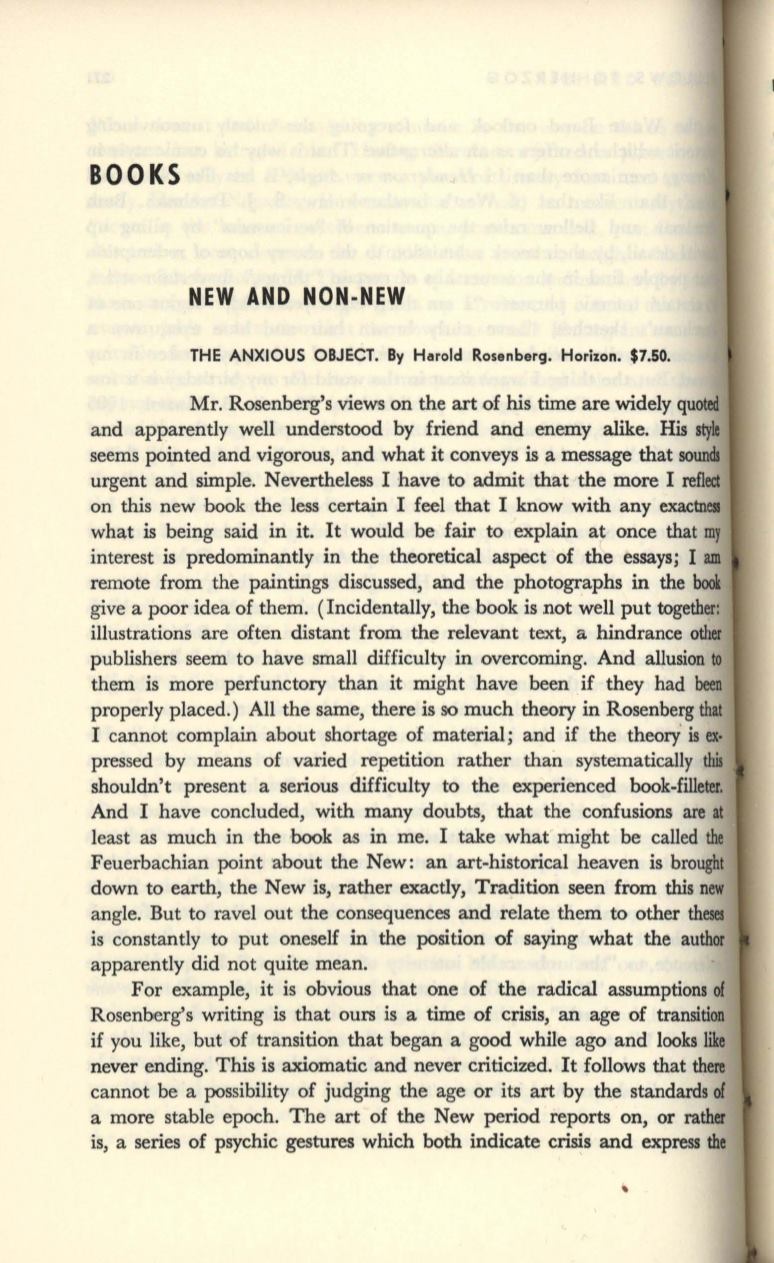
BOOKS
NEW AND NON-NEW
THE ANXIOUS OBJECT. By Harold Rosenberg. Horizon.
$7.50.
Mr. Rosenberg's views on the
art
of his time are widely quoted
and apparently well understood by friend and enemy alike.
His
style
seems pointed and vigorous, and what it conveys
is
a message that
soa
urgent and simple. Nevertheless I have to admit that the more I
reflect
on this new book the less certain I feel that I know with any
exactnel
what
is
being said in it. It would be fair to explain at once
that
my
interest
is
predominantly in the theoretical aspect of the essays; I
am
remote from the paintings discussed, and the photographs
in
the
bed
give a poor idea of them. (Incidentally, the book is not well put together:
illustrations are often distant from the relevant text, a hindrance
other
publishers seem to have small difficulty in overcoming. And allusion
to
them is more perfunctory than it might have been if they had
been
properly placed.) All the same, there is so much theory in Rosenberg
that
I cannot complain about shortage of material; and if the theory'
is
ex·
pressed by means of varied repetition rather than systematically
fbi
shouldn't present a serious difficulty to the experienced book-filleter.
And I have concluded, with many doubts, that the confusions are
at
least as much in the book as in me. I take what might be called
the
Feuerbachian point about the New: an art-historical heaven is
brought
down to earth, the New is, rather exactly, Tradition seen from
this
new
angle. But to ravel out the consequences and relate them to other theses
is constantly to put oneself in the position of saying what the author
apparently did not quite mean.
For example, it is obvious that one of the radical assumptions
of
Rosenberg's writing
is
that ours is a time of crisis, an age of transition
if you like, but of transition that began a good while ago and looks
lib
never ending. This is axiomatic and never criticized. It follows that there
cannot be a possibility of judging the age or its
art
by the standards
of
a more stable epoch. The
art
of the New period reports on, or rather
is, a series of psychic gestures which both indicate crisis and express the
,


